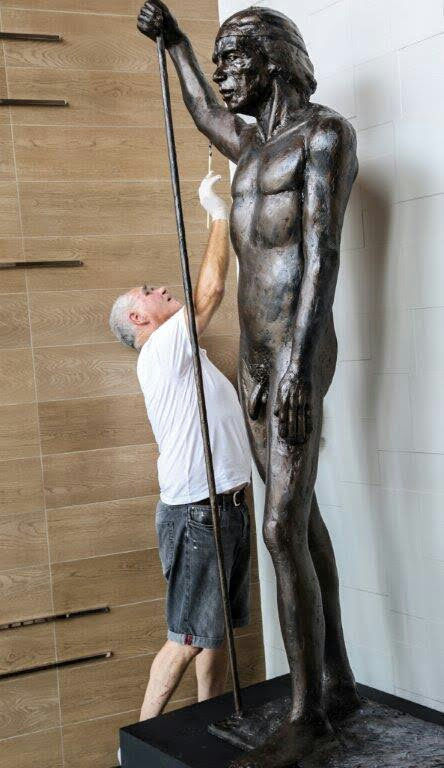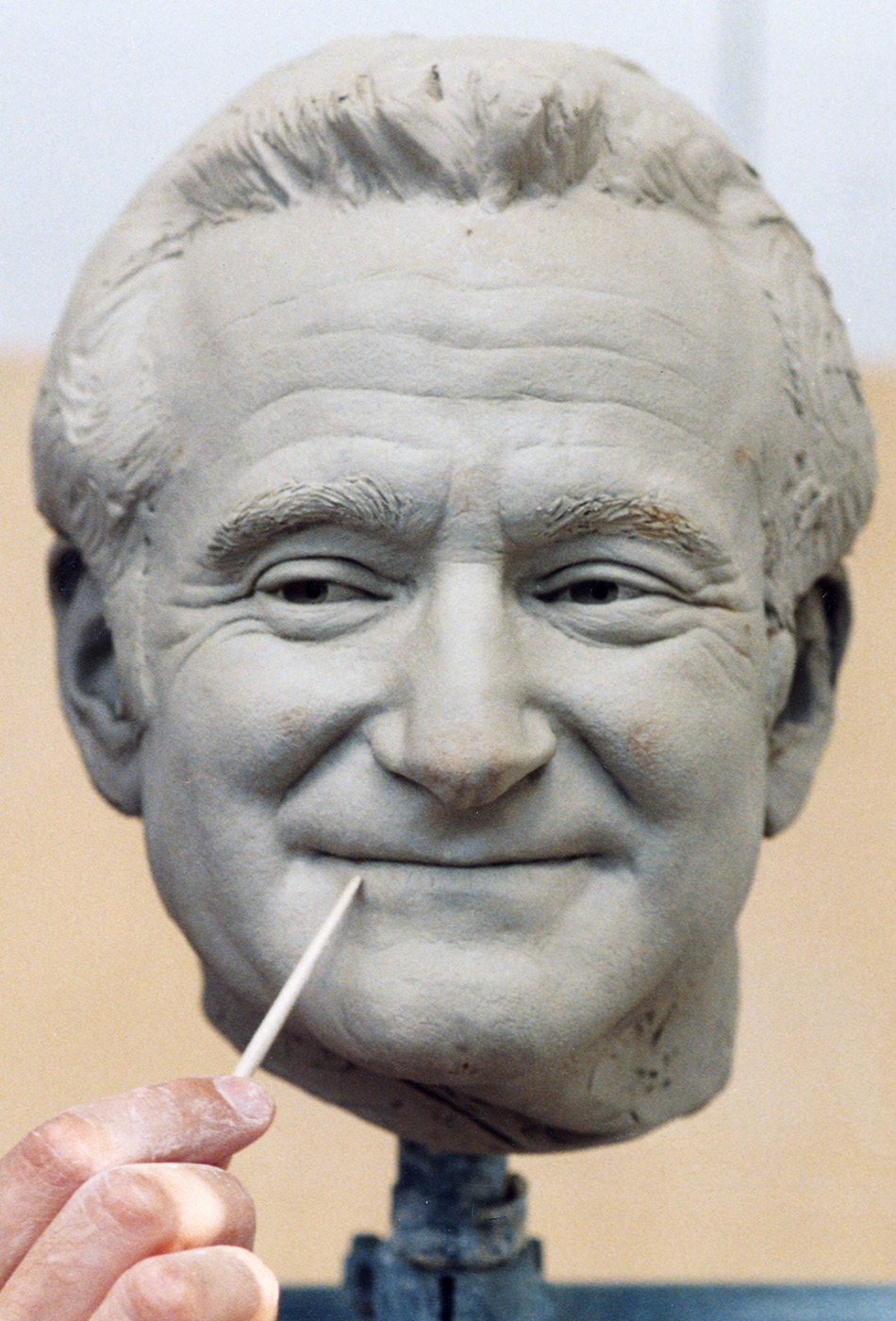Elegance moving: Discover the Elegance of Equine Sculptures
Wiki Article
The Impact of Nature in Sculpture Art
The impact of nature in sculpture art is a subject that has actually captivated musicians throughout history. From ancient people to modern artists, the environment has offered as an extensive resource of inspiration. This influence is evident in the natural types and shapes that are commonly located in sculpture, mimicking the curves and shapes of nature. Carvers also check out texture and products in their work, seeking to recreate the tactile high qualities of the environment. Meaning of natural environments is an additional method which nature affects sculpture, as artists imbue their developments with the definition and organizations intrinsic in these aspects. The environment itself, with its landscapes, plants, and fauna, is usually shown in sculptures, using a link to the world around us. Inevitably, sculpture art has the power to record the transience of nature, freezing a moment in time and allowing us to value its appeal .Organic Kinds and Shapes
Organic shapes and kinds, motivated by the complex patterns and unified structures discovered in nature, play a crucial function in the realm of sculpture art. Carvers have actually long been mesmerized by the elegance and complexity of the natural world, locating inspiration in the elegant curves of a seashell, the delicate petals of a flower, or the twisting branches of a tree. By imitating and extracting these organic kinds, musicians are able to create sculptures that evoke a sense of harmony and balance.One of the reasons organic kinds and forms are so widespread in sculpture art is their capacity to get in touch with customers on a deep psychological level. The natural world recognizes to us all, and when we see these types represented in art, it generates a sense of convenience and acknowledgment. It reminds us of our area in the grand system of things and permits us to link with something above ourselves.
Furthermore, natural kinds and forms in sculpture art usually symbolize a feeling of motion and power. The flowing lines and dynamic make-ups imitate the constant activity and growth found in nature. This creates a feeling of vitality and brings sculptures to life, making them look like if they can proceed to alter and progress before our eyes.
Structure and Product Expedition
A considerable facet of sculpture art influenced by nature is the exploration of appearance and materials with using different techniques and mediums. Artists usually draw ideas from the varied textures found in the all-natural world, such as the harsh bark of a tree, the smooth surface of a pebble, or the detailed patterns on a fallen leave. By incorporating these textures right into their job, carvers can create a responsive experience for customers, inviting them to engage with the artwork on a sensory level.Texture can be attained in sculpture via a range of techniques. Some artists pick to sculpt or form directly into the selected product, producing a three-dimensional surface area that imitates the structures discovered in nature. Others might use techniques such as molding or casting to catch the information of organic textures. Additionally, musicians may try out different products, such as wood, clay, steel, or rock, each offering its very own unique appearance and aesthetic charm.
Product exploration is also a substantial component of sculpture art affected by nature. They might include all-natural aspects like branches, leaves, or even soil right into their sculptures, obscuring the boundaries between art and the setting.
Significance of Natural Components
The incorporation of all-natural aspects in sculpture art includes a layer of significance and deepness to the artwork. By using materials found in nature, sculptors have the ability to imbue their developments with meaning that resonates with visitors on a profound level. Natural environments such as wood, stone, and plants have been utilized throughout background to communicate numerous symbolic messages.Sculptures crafted from this product can evoke a sense of link to the earth and the cycles of life. Sculptures sculpted from stone can signify the ageless nature of particular ideas or ideas.
Flowers and plants are likewise frequently incorporated into sculpture art, representing styles of elegance, development, and revival. The delicate petals and vibrant shades of flowers can evoke sensations of happiness, while the linking branches of plants can symbolize interconnectedness and unity.
In enhancement to these natural materials, carvers may additionally use natural elements such as fire, wind, or water to further boost the symbolic message of their artwork. These aspects can stand for the transformative power of nature, the passage of time, or the pressures that shape our world.

Reflections of the Setting
Reflections of the Atmosphere can be seen in sculpture art through the unification of all-natural aspects and the representation of ecological styles. Carvers typically draw inspiration from the atmosphere, utilizing materials such as wood, rock, and even recycled materials to produce their artworks. By utilizing these all-natural elements, they not only admire the atmosphere but also create a more powerful connection in between the artwork and its environments.In enhancement to the products used, sculpture art also shows the atmosphere with the portrayal of environmental styles. Several carvers choose to depict you can check here animals, plants, or landscapes in their job, highlighting the appeal and delicacy of the environment. These sculptures act as reminders of the significance of protecting our environment and the demand for sustainable methods.

Furthermore, ecological sculptures frequently intend to increase recognition concerning pressing environmental problems. They act as graphes of the impact of human activities on the environment, such as contamination, deforestation, or climate modification. By illustrating these issues in their art work, artists wish to motivate audiences to take action and become more mindful of their very own ecological impact.
Catching the Transience of Nature
Sculpture musicians further explore the impact of nature by masterfully capturing the ephemeral and ever-changing facets of the environment. With their artistry, these musicians intend to illustrate the short lived charm and transience of nature, evoking a sense of marvel and consideration in audiences.One method which sculpture musicians catch the transience of nature is by using products that are themselves based on decay and change. For instance, musicians may pick to collaborate with natural products such as fallen leaves, blossoms, or wood, which naturally wear away in time. This calculated option highlights the impermanence of nature and advises us of the inevitable cycle of life and death.
Additionally, sculpture musicians usually use strategies that create a sense of motion and fluidness in their job. By integrating streaming lines and dynamic forms, they communicate the ever-changing nature of the environment. This can be seen in sculptures motivated by wind, water, or the development of plants, where the artist looks for to catch the essence of consistent movement and transformation.
In addition, some artists select to produce temporary or site-specific installments that communicate with the atmosphere. These ephemeral sculptures, made from materials such as sand, light, or ice, are intentionally created to gradually go away or transform over time. By accepting the transient nature of their creations, musicians welcome viewers to show on the fleeting beauty of the environment and the brevity of human existence.

Conclusion
In verdict, nature has a profound influence on sculpture art (Figurative Sculptures). Structure and material expedition better enhance the link to nature, as musicians usually incorporate natural materials into their sculptures.
Symbolism of all-natural components is an additional method in which nature influences sculpture, as artists imbue their creations with the meaning and associations intrinsic in these components.A considerable aspect of sculpture art affected by nature is the exploration of appearance and products with the use of different strategies and mediums (Equine Sculptures).Material expedition is likewise a significant part of sculpture art affected by nature.One method in which sculpture musicians catch the transience of nature is by using materials that are themselves subject to decay and modification. Appearance and material expedition better enhance the connection to nature, as musicians commonly include natural products into their sculptures
Report this wiki page